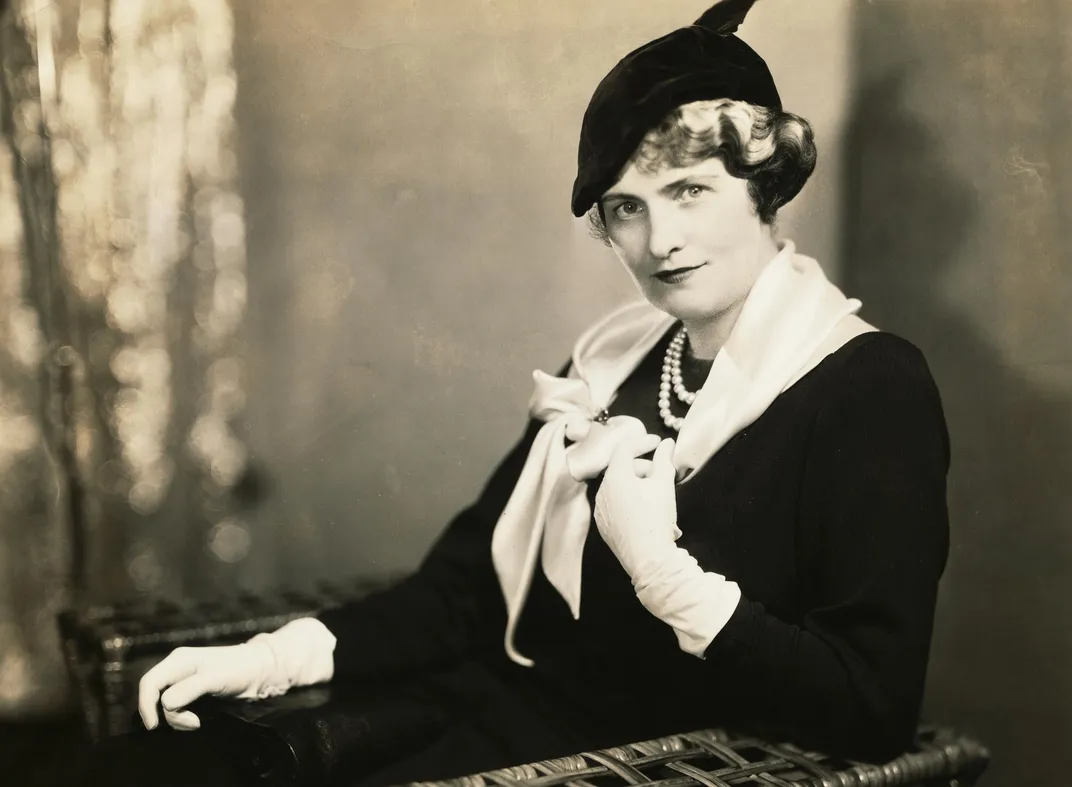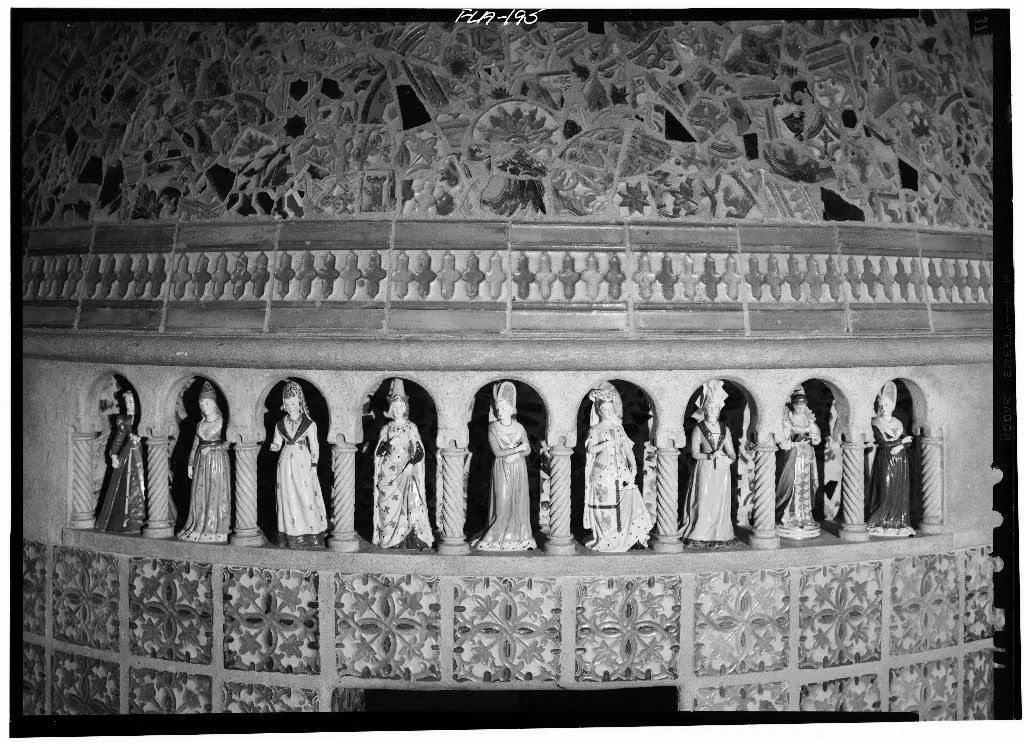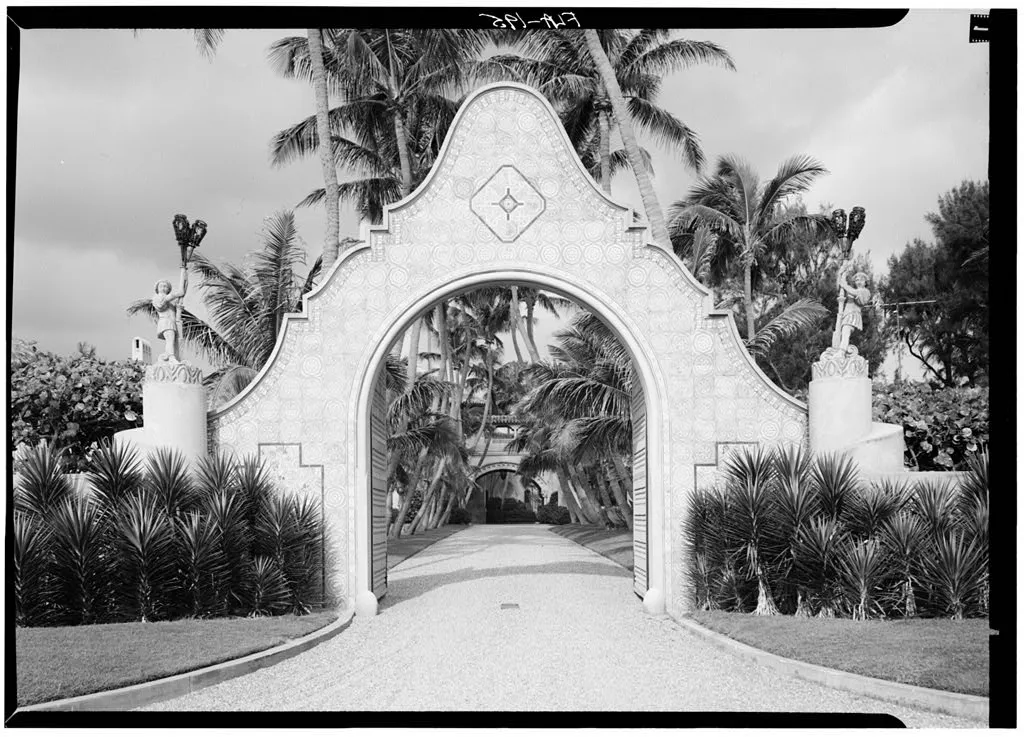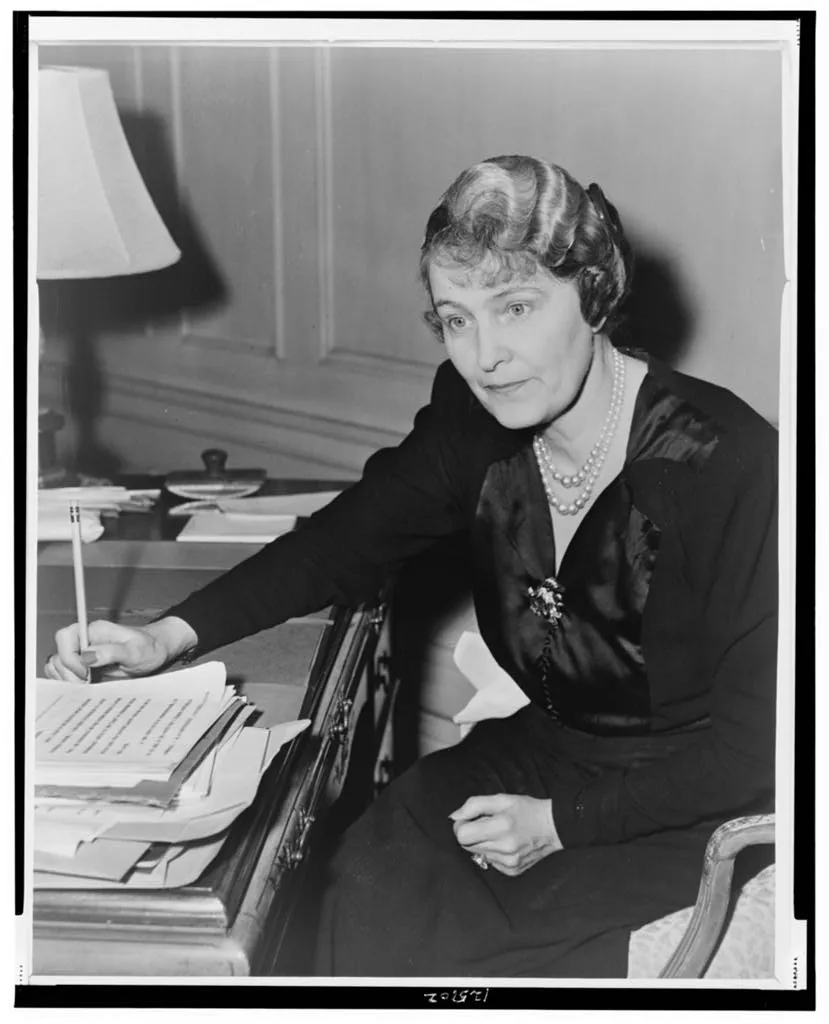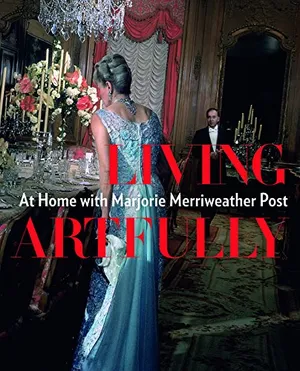The Ironic History of Mar-a-Lago
A deep dive into an obscure archive reveals that the Palm Beach property had once been envisioned as a “Winter White House”
/https://tf-cmsv2-smithsonianmag-media.s3.amazonaws.com/filer/45/56/45568c7f-f57b-4141-87f8-b1c9dff64bab/053242pv.jpg)
Within 48 hours after the presidential election last November, the Palm Beach Daily News headlined a question that “many in town” were asking: “Trump’s Mar-a-Lago: Another Winter White House?”
By January, the president-elect had an answer: “Writing my inaugural address at the Winter White House, Mar-a-Lago,” he tweeted from his elite private club, along with a photograph of himself seated behind a large desk, legal pad and pen in hand.
Palm Beach might have been having déjà vu, and not only because President-elect John F. Kennedy wrote his inaugural address at his father’s estate in the town’s North End. The woman who built Mar-a-Lago in the 1920s and presided over it for almost half a century, Marjorie Merriweather Post, had gone to great lengths to turn the mansion into an official wintertime presidential retreat.
But even extreme wealth has its limitations, as my visit to the Post Family Papers suggests. They occupy 57 seldom-seen linear feet at the University of Michigan’s Bentley Historical Library and document the life of one of the most famous and consequential women of the 20th century. The files offer unusual glimpses of the girl who glued labels onto packages of Postum, the coffee substitute that made her family’s fortune, and of the woman who built the General Foods Corporation. Her four husbands, her bountiful philanthropy, her megayacht, her grand balls, her jaw-dropping jewels—all are documented in the archives.
And then there’s a volume bound in still-handsome red leather. A yellowing file card dated “February/March 1976” is taped to the cover: “Original Proposal for Disposition of Mar-a-Lago.”
The mansion dates to the 1920s, when Palm Beach’s wealthiest visitors were forsaking luxury hotels for their own digs, says Debi Murray, chief curator of the Historical Society of Palm Beach County. Post herself explored the site of her future home, on 17 acres of scrub between Lake Worth and the Atlantic. (Mar-a-Lago means “Sea to Lake” in Spanish.) Construction began in 1923 and kept some 600 workers busy, even though, as Murray notes, “Florida entered the Depression earlier than the rest of the country.” The mistress ensured that her workers wouldn’t go hungry.
Living Artfully: At Home with Marjorie Merriweather Post
This is a beautifully illustrated account of the three main homes of Marjorie Merriweather Post (1887–1973), through the 1950s to 1970s.
Even by Palm Beach standards, Mar-a-Lago was grandiose: 58 bedrooms, 33 bathrooms with gold-plated fixtures (easier to clean, Post believed), an 1,800-square-foot living room with 42-foot ceilings. Its 110,000 square feet glinted with gold leaf, Spanish tiles, Italian marble and Venetian silks. All told, Post spent $7 million—somewhere north of $90 million today.
It was finished in 1927. That March, Post and her second husband, Edward F. Hutton, had a few score guests over for dinner before the annual Everglades Costume Ball. The hosts wore costumes evoking the reign of Louis XVI. But there was also noblesse oblige: In 1929, when she hired the Ringling Bros. and Barnum & Bailey Circus to perform for a charity fund-raiser, she invited underprivileged children to attend. In 1944, she offered her grounds to World War II veterans who needed occupational therapy. In 1957, she opened Mar-a-Lago to the International Red Cross Ball, and the gala event has been held there many times since—but not this year. It was one of more than 20 charity events that were relocated from Mar-a-Lago or canceled after the president’s remarks on violent protests in Charlottesville, Virginia, in August.
As the social seasons came and went, however, Palm Beach tastemakers’ tastes changed. The grand houses they built in the 1920s were seen as “white elephants,” Murray says, and were razed in the ’50s and ’60s.
Except that isn’t how Post saw Mar-a-Lago—or Hillwood, her estate in Washington, D.C., or Camp Topridge, her retreat in the Adirondacks. She arranged to donate all three properties to government entities. The state of New York added some of Topridge’s acreage to a forest preserve but sold most of its 68 buildings to a private owner. The Smithsonian Institution, citing maintenance costs, returned Hillwood to the Post Foundation, which now runs it as a museum.
And the original Mar-a-Lago proposal, the one bound in red leather, was to donate it to the state of Florida for a center for advanced scholars, but state officials also balked at the maintenance costs.
By 1968, according to other papers in the archive, Post had turned to Plan B: Mar-a-Lago as winter White House, property of the United States. After she died, in 1973, at age 86, the Post Foundation pursued the idea. But in 1981, the federal government declined, for the same reason the Floridians and the Smithsonian did.
Thus Mar-a-Lago went on the market. Three potential sales collapsed before Donald Trump bought it in 1985, paying a reported $8 million for the estate and its furnishings—a small fraction of the original cost, no matter how you calculate it. And after three decades and the most confounding presidential election in living memory, Marjorie Merriweather Post’s wish for her mansion came true.
Presidential Hibernation
Mar-a-Lago is the most lavish winter White House, but for a century chief executives have tried to escape Washington when the snow flies. --By Anna Diamond
Woodrow Wilson
/https://tf-cmsv2-smithsonianmag-media.s3.amazonaws.com/filer/20/2e/202eea70-e186-4564-b9d9-86dc32d1c32f/wilson.jpg)
President Wilson spent some of the winter of 1912-13 in Pass Christian, Mississippi, at the Beaulieu mansion, a.k.a. the “Dixie White House,” then owned by Marie Louise Ayer of New Jersey. In 1880, a previous owner, Gen. William Harney, a Mexican-American War veteran, hosted a former president—Ulysses S. Grant.
Warren G. Harding
/https://tf-cmsv2-smithsonianmag-media.s3.amazonaws.com/filer/99/87/9987db86-b528-4228-baac-ebf99e7ded59/harding.jpg)
John Ringling, of the Ringling Bros. Circus, was a real estate developer in Sarasota, Florida, and in the spring of 1923 offered Harding the use of a car as well as a mansion, which he began decorating after the president reportedly accepted the invite. Harding never made the trip: He died of a heart attack in August.
Calvin Coolidge and Herbert Hoover
/https://tf-cmsv2-smithsonianmag-media.s3.amazonaws.com/filer/72/92/72929d7d-4e80-4b46-881d-6c3010c7d96c/coolidgehoover.jpg)
In 1912, the former automotive executive Howard Coffin purchased most of Sapelo Island, Georgia. Before he sold it 22 years later, Coffin hosted Presidents Coolidge and Hoover and a number of famous friends, including Charles Lindbergh and Henry Ford.
Franklin D. Roosevelt
/https://tf-cmsv2-smithsonianmag-media.s3.amazonaws.com/filer/01/bb/01bb8d6d-3b44-4f95-b575-db3d4bd15b69/fdr.jpg)
FDR first visited Warm Springs, Georgia, in 1924, hoping the waters would ease his polio symptoms. He soon bought the town’s hotel and turned it into a nonprofit hospital for polio patients (now the Roosevelt Warm Springs Vocational Rehabilitation Campus). In 1932, Roosevelt built a home nearby, the Little White House. He died there in 1945.
Harry S. Truman
/https://tf-cmsv2-smithsonianmag-media.s3.amazonaws.com/filer/13/bd/13bdc34e-2938-416f-bee6-7814795f8551/truman.jpg)
President Truman made 16 trips to the Little White House at the U.S. Naval Station in Key West, Florida. Enjoying the break from D.C., he wrote to his wife, “I’ve a notion to move the capital to Key West and just stay.” It seems he started a tradition. Presidents Eisenhower and Kennedy both used the house during their terms. Later, Jimmy Carter and Bill Clinton vacationed there after leaving office.
John F. Kennedy
/https://tf-cmsv2-smithsonianmag-media.s3.amazonaws.com/filer/28/8c/288cb084-431c-4b8c-ac79-bdf9a40e11ba/jfk.jpg)
Joseph P. Kennedy bought this Palm Beach property in 1933 and the family vacationed there for decades, spending days on the beach and tennis court. As a senator recovering from back surgery, JFK worked on his book Profiles in Courage at the estate, and he continued to visit while president. Kennedy’s last trip was in November 1963, just days before he was assassinated in Dallas.
Richard Nixon
/https://tf-cmsv2-smithsonianmag-media.s3.amazonaws.com/filer/56/cc/56cc06c9-0934-4d4e-ad47-a09d42cb6508/nixon.jpg)
President Nixon made more than 50 trips to his ranch-style house in the Miami suburb of Key Biscayne. It’s where he retreated after the political fallout from the Watergate break-in. The house, which served as a location in Brian De Palma’s 1983 gangster film Scarface, was demolished in 2004.
George W. Bush
/https://tf-cmsv2-smithsonianmag-media.s3.amazonaws.com/filer/d5/e2/d5e21b0c-ac1e-4ab5-8b48-a458be5dafb5/bush.jpg)
George Bush completed the 1,600-acre Prairie Chapel Ranch in Crawford, Texas, just after he became president in 2001. In his two terms, “43” headed west 77 times, and played host to 17 dignitaries there, including President Vladimir Putin of Russia and King Abdullah bin Abdulaziz of Saudi Arabia.
A Note to our Readers
Smithsonian magazine participates in affiliate link advertising programs. If you purchase an item through these links, we receive a commission.

